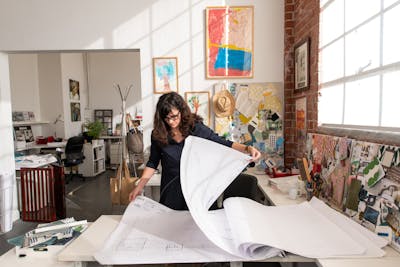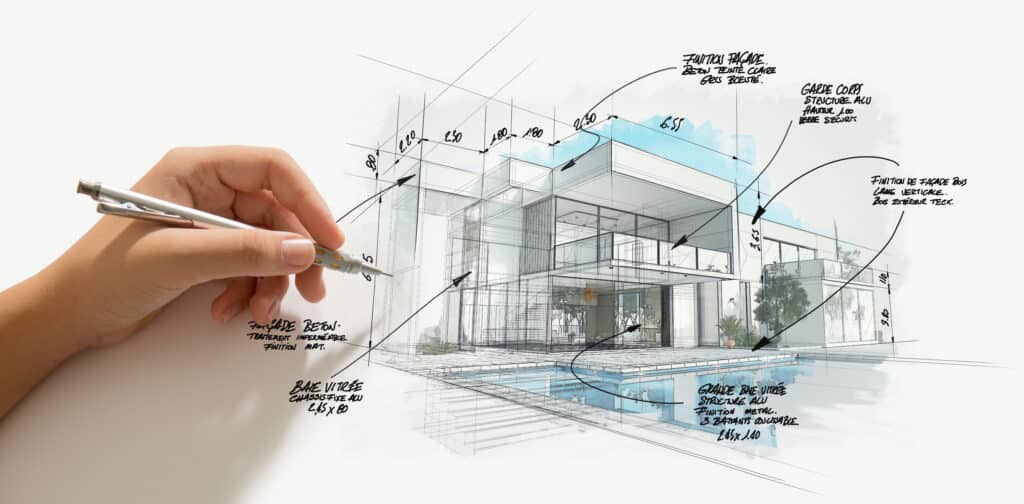The Art of Balance: How Interior Design and Home Engineer Collaborate for Stunning Results
In the realm of home design, striking a balance between visual appeals and functionality is no small task. This fragile stability is accomplished with the harmonious collaboration in between indoor designers and architects, each bringing their distinct knowledge to the table. Stay with us as we discover the details of this joint process and its transformative impact on home layout.
Recognizing the Core Differences Between Interior Decoration and Home Design
While both interior layout and home style play necessary roles in creating visually pleasing and useful spaces, they are inherently various disciplines. It deals with the 'bones' of the structure, working with spatial measurements, load-bearing wall surfaces, and roofing system styles. On the various other hand, indoor design is a lot more worried with boosting the sensory and visual experience within that framework.
The Harmony In Between Home Architecture and Interior Style
The synergy in between home style and Interior Design depends on a shared vision of design and the enhancement of practical aesthetics. When these two fields line up harmoniously, they can change a home from ordinary to remarkable. This partnership calls for a much deeper understanding of each technique's concepts and the capacity to develop a natural, aesthetically pleasing environment.
Unifying Design Vision
Combining the vision for home architecture and indoor design can develop a harmonious living room that is both functional and cosmetically pleasing. It promotes a collaborating technique where architectural aspects complement indoor design elements and vice versa. Thus, unifying the style vision is essential in mixing architecture and indoor design for sensational outcomes.
Enhancing Practical Visual Appeals
Just how does the synergy between home style and Interior Design improve functional looks? This harmony allows the production of spaces that are not only aesthetically appealing yet also conveniently useful. Architects lay the foundation with their architectural design, making sure that the room is practical and effective. The interior designer after that enhances this with thoroughly selected components that enhance the visual appeals without endangering the functionality. This unified collaboration can result in homes that are both liveable and gorgeous. An engineer could make a residence with large windows and high ceilings. The interior designer can then accentuate these features with sheer drapes and tall plants, specifically, thus boosting the visual charm while preserving the functional advantages of natural light and spaciousness.
Value of Partnership in Creating Balanced Spaces
The collaboration in between interior developers and architects is crucial in producing balanced areas. It brings harmony in between design and style, giving birth to rooms that are not only cosmetically pleasing however additionally practical. Discovering successful joint methods can provide understandings into exactly how this harmony can be successfully achieved.
Balancing Layout and Design
Equilibrium, a vital facet of both Interior Design and style, can only really be attained when these two fields operate in harmony. This harmony is not just an aesthetic consideration; it influences the functionality, longevity, and ultimately, the livability of an area. Inside designers and architects must comprehend each various other's duties, respect their know-how, and communicate efficiently. They need to take into consideration the interplay of structural aspects with decoration, the circulation of spaces, and the impact of light and color. This collective procedure causes a natural, balanced design where every element adds and has an objective to the total visual. Therefore, harmonizing design and design is not almost producing attractive rooms, yet regarding crafting areas that wikipedia reference work perfectly for their residents.
Effective Collective Strategies

Case Researches: Successful Integration of Layout and Design
Examining numerous study, it comes to be obvious how the effective integration of Interior Design and architecture can change a space. The Glass Residence in Connecticut, renowned for its minimalistic beauty, is one such instance. Architect Philip Johnson and indoor designer Mies van der Rohe teamed up to create an unified equilibrium in between official source the framework and the inside, resulting in a smooth flow from the exterior landscape to the internal living quarters. Another prototype is the Fallingwater House in Pennsylvania. Designer Frank Lloyd Wright and indoor designer Edgar Kaufmann Jr.'s collective initiatives result in an amazingly unique home that mixes with its natural environments. These instance studies highlight the extensive impact of a successful layout and style collaboration.

Conquering Obstacles in Style and Architecture Cooperation
In spite of the undeniable advantages of a successful cooperation between Interior Design and design, it is not without its obstacles. Communication issues can develop, as both parties might use various terminologies, understandings, and techniques in their work. This can cause misunderstandings and hold-ups in project conclusion. An additional major obstacle is the balancing act of appearances and performance. Engineers may focus on architectural stability and safety and security, while designers concentrate on convenience and style. The combination of these objectives can blog be complicated. In addition, budget plan and timeline restrictions commonly include stress, potentially causing rifts in the collaboration. Efficient interaction, common understanding, and concession are essential to get rid of these obstacles and attain a effective and unified cooperation.

Future Patterns: The Evolving Connection In Between Home Architects and Interior Designers
As the globe of home design proceeds to evolve, so does the relationship between architects and indoor developers. On the other hand, interior developers are embracing technological aspects, influencing total format and performance. The future promises an extra natural, innovative, and flexible method to home layout, as developers and designers continue to blur the lines, promoting a relationship that absolutely symbolizes the art of equilibrium.
Verdict
The art of balance in home style is accomplished through the unified cooperation between indoor designers and designers. An understanding of each various other's disciplines, effective interaction, and shared vision are vital in producing visually spectacular, functional, and welcoming rooms. In spite of difficulties, this partnership promotes growth and technology in design. As the connection between home designers and indoor designers progresses, it will certainly remain to form future patterns, enhancing convenience, performance, and individual expression in our living areas.
While both interior layout and home design play vital duties in creating aesthetically pleasing and practical rooms, they are inherently various self-controls.The harmony between home architecture and indoor layout exists in a shared vision of design and the enhancement of useful aesthetics.Unifying the vision for home style and interior style can develop an unified living area that is both useful and aesthetically pleasing. Therefore, unifying the layout vision is essential in mixing style and interior design for sensational outcomes.
How does the synergy between home design and indoor layout enhance practical appearances? (Winchester architect)